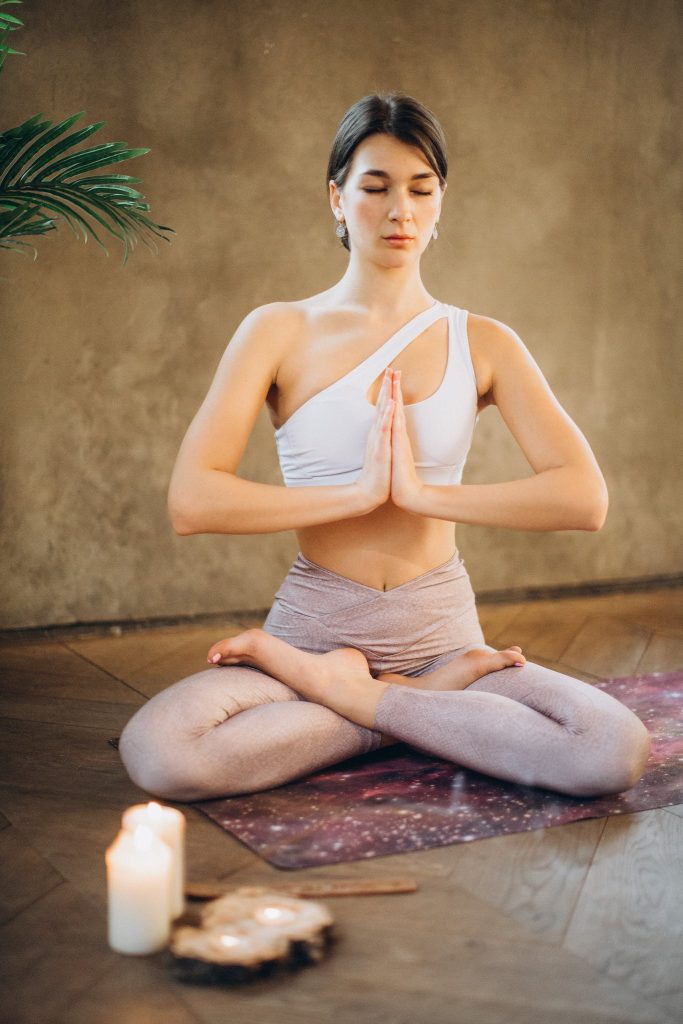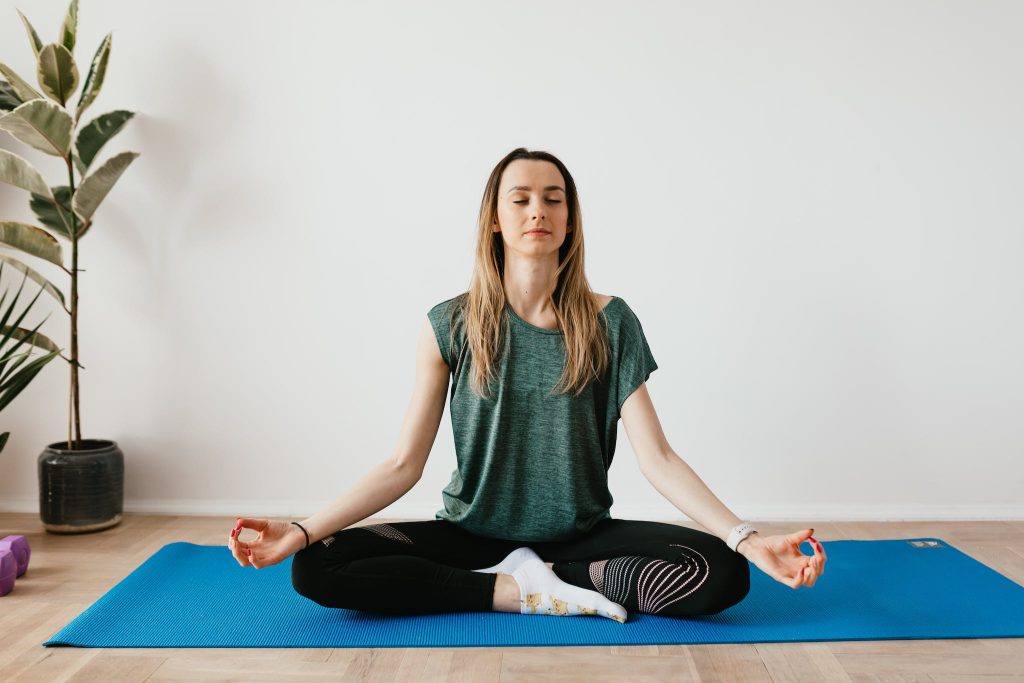Mindfulness Exercises for Anxiety: A Complete Guide to a Calmer and Happier You
Have you ever found yourself feeling overwhelmed by anxiety, searching for a way to calm your racing thoughts and regain your sense of balance?
Mindfulness exercises are simple yet powerful techniques that help us focus on the present moment, without judgment or criticism.
When we practice mindfulness, we train ourselves to become more aware of our thoughts and feelings, allowing us to respond to situations with greater clarity and resilience.
And, as a bonus, these exercises are super easy to incorporate into our daily lives!

Anxiety is something that most of us experience at some point in our lives.
Whether it’s because we’re stressed about work, dealing with personal issues, or simply overwhelmed by the fast-paced lives we lead, anxiety can hit you out of nowhere.
There are ways to manage your anxiety, and one of them is through mindfulness exercises.
Here are some of my favorite mindfulness exercises for anxiety that have helped me, and will hopefully help you too!
What is Mindfulness?
Before I share my top mindfulness exercises for anxiety, let’s first understand what mindfulness really is.
Mindfulness is the practice of paying attention to the present moment with an open, non-judgmental attitude.
It’s about appreciating the here and the now, rather than being carried away by racing thoughts or overwhelming emotions.
Seems simple, right? But let me tell you, it can take some practice to master, and it’s totally worth it!
The Benefits of Mindfulness for Anxiety
Anxiety is like that uninvited guest at a party who demands too much attention and spoils the fun.
So, why not show that party pooper the door by practicing mindfulness?
Here are some benefits mindfulness can bring when it comes to dealing with anxiety:
- It helps us become aware of our thoughts and feelings without getting too attached to them, making it easier to let go of anxiety.
- Mindfulness helps us develop healthier coping mechanisms to deal with stress.
- Practicing mindfulness can improve our overall well-being and emotional resilience.
- It enables us to be more present in our lives, promoting happiness, and boosting our self-esteem.
let’s jump into some fantastic mindfulness exercises for anxiety!
The Top 5 Mindfulness Exercises for Anxiety
Breathing Exercises: Inhale the Good Stuff, Exhale the Jitters
The first and most straightforward exercise involves our good old lungs and that magical thing called breath.
That’s right; simple breathing exercises can actually help you feel more relaxed, focused, and centered. Here are two easy breathing techniques you can try:
- Equal Breathing – Inhale deeply through your nose for a count of four, and then exhale through your mouth for another count of four. Repeat this cycle for a few minutes, and you’ll feel calmer in no time.
- 4-7-8 Breathing Technique – Inhale through your nose for a count of four, hold your breath for seven counts, and then exhale through your mouth for eight counts. I can’t even tell you how many times this little beauty has saved me from a stress spiral!
Body Scan Meditation: Check-in with Your Amazing Self
Did you know that our bodies often hold onto tension and stress without us even realizing it?
That’s why doing a body scan meditation is not only an excellent way to practice mindfulness, but it’s also a fantastic way to relieve physical tension and promote relaxation.
Seriously, it’s like giving yourself a mental hug!
Here’s a simple step-by-step guide to body scan meditation:
- Find a comfortable position, whether it’s sitting or lying down.
- Close your eyes and take a few deep breaths to center yourself.
- Start at your feet and mentally scan each body part, working your way up to your head.
- As you scan, take note of any areas that feel tense or uncomfortable.
- Breathe into those areas, releasing tension with each exhale.
Mindful Walking
Have you ever noticed how our minds often wander while we walk?
It’s like our feet are moving, but our thoughts are miles away!
To practice mindful walking, simply:
- Find a quiet place to take a walk, like a park or a wooded trail.
- Take slow, deliberate steps, paying attention to the ground beneath your feet.
- Focus on your body’s movements and the sensations of each step.
- Bring your attention to the sounds, sights, and smells surrounding you.
- Whenever your mind wanders, gently bring your focus back to your walking experience.
Loving-Kindness Meditation
First up on our list is the loving-kindness meditation. I absolutely love this exercise because it not only promotes a sense of inner peace but also helps you cultivate a more compassionate and understanding mindset. So, if you’re ready to give it a go, let me guide you through it.
- Find a quiet and comfortable spot where you won’t be disturbed. Sit in a relaxed position, with your eyes closed or at least half-closed (this helps to eliminate distractions).
- Begin by taking a few deep breaths, inhaling and exhaling slowly, focusing on the sensation of your breath.
- Now, picture someone that you love dearly, and mentally repeat these phrases:
- May you be happy.
- May you be healthy.
- May you be safe.
- May you be at ease.
- Next, envision a friend or acquaintance, and repeat the same phrases for them.
- Continue to expand your circle, including a stranger, someone you have a difficult relationship with, and eventually, the entire world.
By the end of the loving-kindness meditation, you’ll likely feel a warm sense of well-being and connection with others, which can work wonders in reducing anxiety.
Journaling: Putting Pen to Paper
One of my go-to mindfulness exercises for anxiety has to be journaling. I find that when I’m stressed or worried, writing down my thoughts and feelings can really help me gain perspective and declutter my mind. Plus, it’s a fantastic way to track your progress in tackling anxiety.
Here are a few journaling prompts to get you started:
- What worries or fears are you currently experiencing?
- Note down any physical sensations that accompany your anxiety (e.g., shallow breathing, tightness in your chest, etc.)
- List a few things you’re grateful for today.
- Write a letter to your future self, discussing how you overcame your anxiety.
Give journaling a try, and you might be surprised at how much lighter and more in control you feel after putting your thoughts on paper.
Tips for Practicing Mindfulness: Staying Present
For many of us, anxious thoughts often arise when we’re either dwelling on the past or worrying about the future. Practicing mindfulness can help anchor us to the present moment and alleviate those swirling thoughts. Here are a few quick tips to incorporate mindfulness into your daily routine:
- Focus on your breath: Take a few deep breaths, concentrating on the sensation of your breath entering and leaving your body.
- Tune into your senses: Engage all your senses and observe your surroundings: the sounds, the smell
Try incorporating these mindfulness exercises into your daily routine and see how they impact your anxiety levels.
For me, adopting this practice has been great and I hope it does the same for you.

In conclusion, if you’re struggling with anxiety, remember that you don’t have to face it alone.
Simple mindfulness exercises, like the ones we’ve discussed, can help you manage your anxiety and regain control of your thoughts.
As you embark on this journey to a calmer mind, be kind to yourself and remember that progress takes time.
With practice and perseverance, you can experience the benefits that mindfulness has to offer. So, take a deep breath… and let’s tackle anxiety together, one mindful moment at a time.






